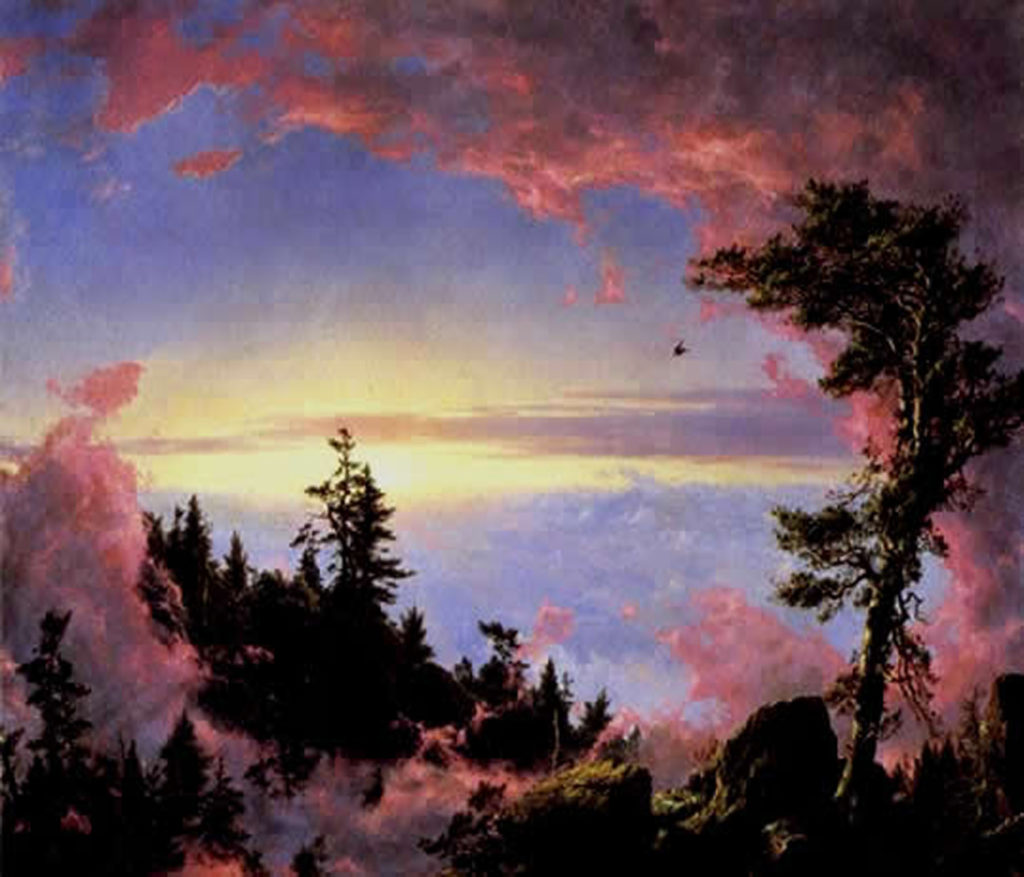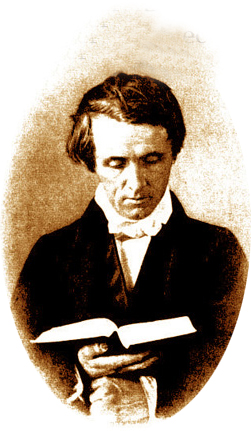
The unconscious influences in the city
Great city builders and artists have always worked hard to display the presence and role of the divine in the city. In the 19th Century, the Hudson River school of artists moved the gaze from cathedrals to nature (creation). The artists saw the flourishing of America as a product of the presence of a special providence and presence of God as testified in the display of God’s glory in the natural environment of the Hudson River. To them this was not an imaginary reality but a reality. New York City itself is centered around this sensibility as represented by Central Park.

Above the clouds at sunrise. Painting by Frederic Edwin Church
Frederick Law Olmsted (1822-1903) designed Central Park to be “a specimen of God’s handiwork” that would heal “the hundreds of thousands of tired workers” of their “vital exhaustion,” “nervous irritation” and “constitutional depressions.” As Vice President of the New York State Charities Aid Association, he circulated appeals to ministers asking that they send their congregants who needed recuperation from stress and illness to the park.
Olmsted’s and Calvert Vaux’s design of Central Park artfully and systematically provided vistas and paths that would make one feel like the special object of a loving God through a beautiful city. Olmsted said every path, rock, flower and tree had a functional purpose in the creation of a healing scene. The park would then revive “the poetic element of human nature” and exercise a “harmonizing and refining influence…favorable to courtesy, self-control and temperance.” Olmsted designed the heart of the park around an incident recounted in the New Testament in which Jesus healed a paralytic man beside the pool of Bethesda.

Angel at Bethesda Fountain, Central Park
A particularly important resource for Olmsted’s thinking, early in his design career, was the teaching of theologian Horace Bushnell.
Olmsted was taken by Bushnell’s belief that one is most influenced by God through “unconscious influences” from one’s social circles and natural environment. The concept was launched off the premise that Christ’s love is more influential than appeals to logic. Olmsted wrote, “When our ministers will not feel it their duty to preach Christ solely to the understanding, but let Christ come as Love and not as Logic, the world will grow better faster than if ever has done before.” Olmsted traced the root of his belief to hearing a famous sermon, “Unconscious Influence,” given by Bushnell.
The pastor began his sermon “Unconscious Influence” with a quotation from the twentieth chapter of the Gospel of John so brief that most of his audience probably missed it at first: “There went in also that other disciple.” Its brevity, Bushnell said, is the point: through just a moment of social influence lives were changed. The verse came after hearing from Mary Magdalene that Jesus had risen from the dead, John and Peter hurried to check out the cave of Jesus’ entombment. John arrived first but hesitated to enter. Only after Peter arrived and entered without hesitation did John follow and both did “see and believe” in the resurrection of Jesus.

Horace Bushnell was a mentor to Olmsted, the co-designer of Central Park
Bushnell then pointed out how every person hesitates to action until unconsciously influenced by the action of another. “And just so, unawares to himself, is every man the whole race through, laying hold of his fellow-man, to lead him where otherwise he would not go. We overrun the boundaries of our personality—we flow together. A Peter leads a John, a John goes after a Peter, both of them unconscious of any influence exerted or received. And thus our life and conduct are ever propagating themselves, by a tow of social contagion, throughout the circles and times in which we live.”
In Central Park the awe of God’s creation is one way that the park’s environment convinces the heart before the mind understands. In all of Olmsted’s designs he systematically worked to eliminate all elements that might distract the viewer from this unconscious delight of the park. The landscaper also liked this principle of Bushnell’s because it allowed the person walking through the park the freedom to formulate his or her own response. Olmsted certainly felt that for him the Park’s panorama spoke about God’s glory, but he felt that other people should have the freedom to come to a different conclusion.
The effort to put the soul back into news reports is showing how religion shows up in all the scenes of life. As the mind is cultivated to be more aware of the religious elements in the city, the urbanite unconsciously starts to process and recognize the thickness of religion as a natural taken-for-granted part of urban sensibility.
The reporter’s practice should be like the animators at Pixar studio who push to constantly to improve their ability to digitally increase the details in animation. The more small and invisible the details are to the eye, the more the mind unconsciously ”sees” the animation as having a supple, natural reality. On the big picture screen you may not be able to see the nose hairs, but their presence is processed by the mind into a feeling of naturalness. We, too, hope to paint a picture of the city thick with faith details so that people will “see” the natural, spiritual excitements of the city.
There is one difference between Bushnell’s and Journey’s approach. We agree with Olmsted that the growing awareness of religion in the city means that all religions benefit. It is commonly pointed out that a weakness of Bushnell’s evangelistic approach brings only general awareness of religion, but not to any specific conclusion about what religion to believe. If one is to be persuaded of any particular religion, then its adherents will have to do the persuading.
The art of the news was marred for years by an absence of the valued presence of religion. Too many of our daily news reports relegated religion to a minuscule presence in its daily reports. For a reporter, an assignment to the religious beat was not a fast track to the top. The memory of the city’s religious history and actors also faded from news reports. Sometimes, history was written as if religion played little or no role or, at best, a bad, conflictual role in New York City. For a while, most people, including the Encyclopedia of New York City and Wikipedia, portrayed the great reporter Jacob Riis as a muckracker and reformer without any mention of the central motive of his work: his evangelical Christian faith. However, there has been a massive increase in the presence of religion in New York City which also means that the religious history of city has become an evergreen resource for urban self-understanding.
Now, we hope to educate our senses so that we can at least appreciate how many New Yorkers sense religions as a part of the taken-for-granted experience of the city. The goal of putting the soulful dimension back into an appreciation of our city will create a new aesthetic for the news and for the city.

“The Good Shepherd” commissioned by Jacob Riis in memory of his wife Elizabeth, at The Church of the Resurrection, Richmond Hill, Queens. Photo: A Journey through NYC religions
Used with permission from A Journey through NYC religions



Leave a Reply